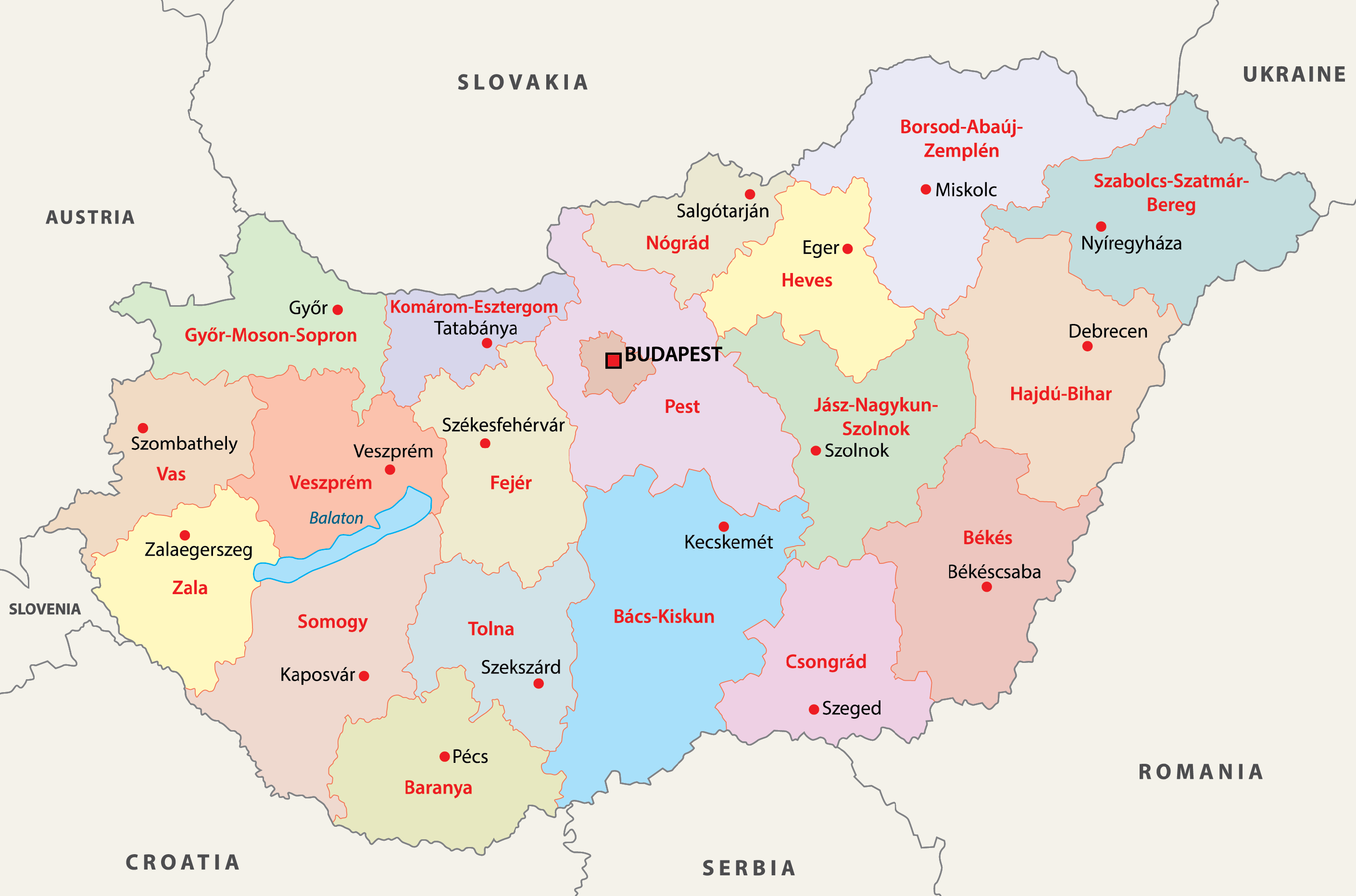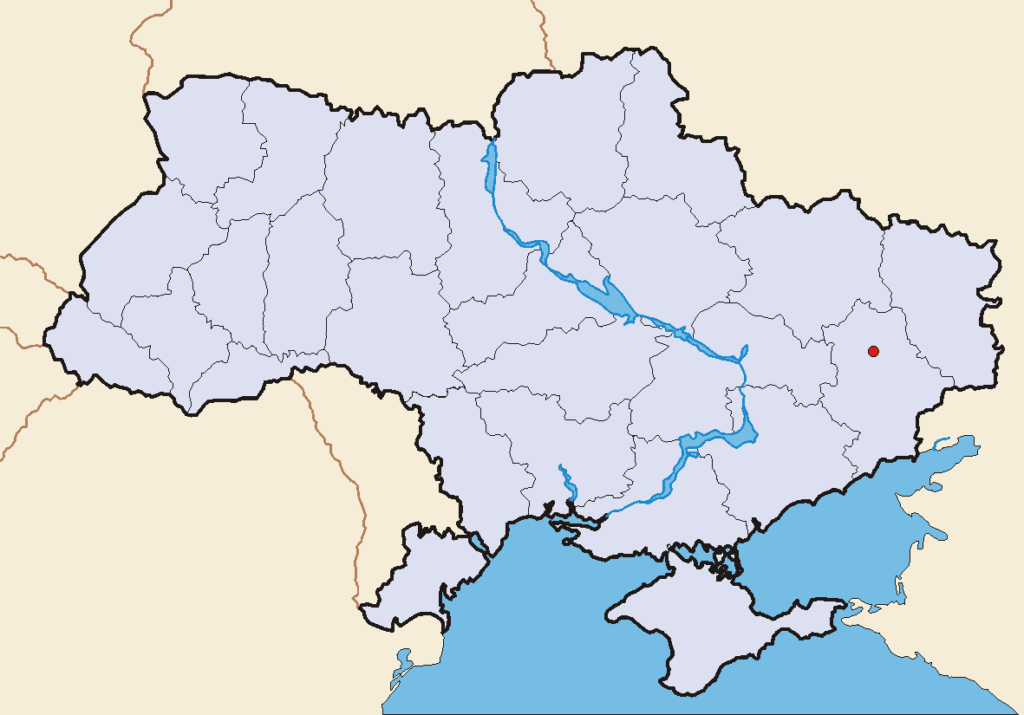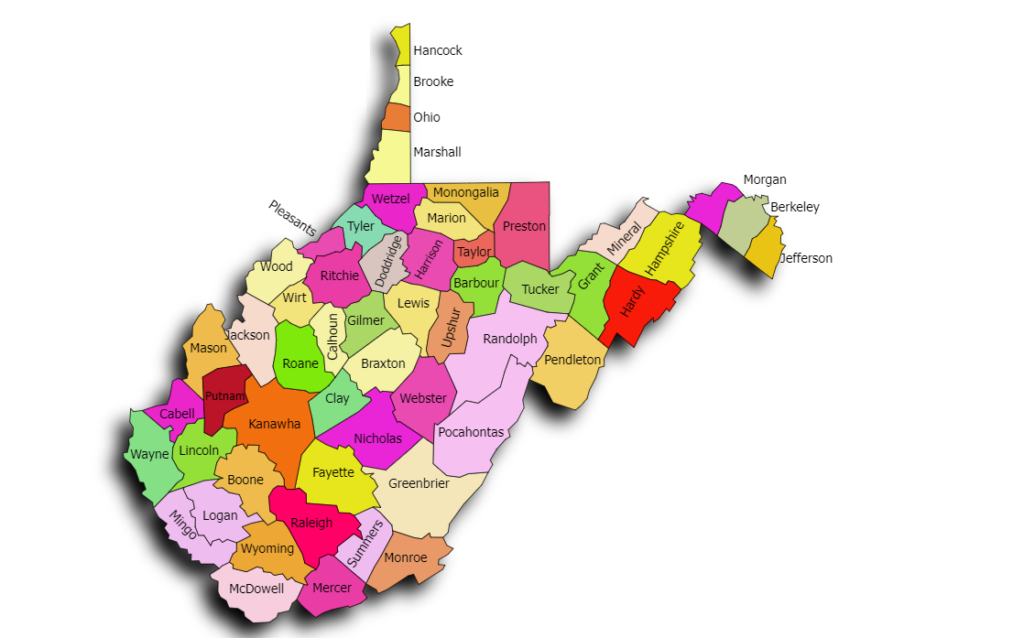Geography of Hungary
Location
Hungary is located in Central Europe and is bordered by seven countries: Austria to the northwest, Slovakia to the north, Ukraine to the northeast, Romania to the east, Serbia to the south, Croatia to the southwest, and Slovenia to the west. The country lies in the Carpathian Basin and is a landlocked nation.
Physical Features
Hungary’s landscape is diverse and includes the Great Hungarian Plain (Alföld) to the east, the Transdanubian Hills (Dunántúli-dombság) to the west, and the Northern Mountains (Északi-középhegység) which include the Mátra and Bükk ranges. The highest point in Hungary is Kékes, at 1,014 meters (3,327 feet), located in the Mátra Mountains. The Danube River, which is the second-longest river in Europe, flows through the country and divides it into two main regions: Transdanubia and the Great Plain.
Climate
Hungary experiences a continental climate, characterized by hot summers and cold winters. Average summer temperatures range between 25-30°C (77-86°F), while winter temperatures can drop to -5°C (23°F) or lower. The country receives moderate rainfall, with the wettest months being May and June.
Natural Resources
Hungary is rich in natural resources such as bauxite, coal, and natural gas. The country also has fertile agricultural land, particularly in the Great Hungarian Plain, which supports the cultivation of crops like wheat, corn, and sunflowers.
History of Hungary
Ancient and Medieval Periods
The history of Hungary dates back to ancient times when Celtic tribes inhabited the region. Later, it was part of the Roman Empire. In the 9th century, the Magyars, a Finno-Ugric people, migrated to the Carpathian Basin. Under the leadership of Árpád, they established the Principality of Hungary. In 1000 AD, Stephen I was crowned as the first King of Hungary, marking the foundation of the Kingdom of Hungary. The medieval period saw the rise of powerful dynasties and the flourishing of Hungarian culture and arts.
Ottoman Rule
In the 16th century, Hungary faced the expansion of the Ottoman Empire. After the Battle of Mohács in 1526, the kingdom was divided into three parts: the Habsburg-ruled Royal Hungary, the Ottoman-occupied central regions, and the semi-independent Principality of Transylvania. This period was marked by significant conflict and cultural exchange.
Habsburg Monarchy
The 17th century saw the gradual decline of Ottoman power and the consolidation of Habsburg rule over Hungary. The country became part of the Austrian Empire and later the Austro-Hungarian Empire, formed in 1867. This era brought modernization and industrialization, but also struggles for national autonomy and independence.
20th Century to Present
The 20th century was turbulent for Hungary, with involvement in both World Wars, the Treaty of Trianon (which significantly reduced Hungary’s territory), and a period of communist rule under Soviet influence. The Hungarian Revolution of 1956 was a key moment in the fight against communist oppression. In 1989, Hungary transitioned to a democratic republic, and it joined the European Union in 2004.
Political and Administrative Structure
Government System
Hungary is a parliamentary republic. The President, elected by the National Assembly for a five-year term, serves as the head of state with largely ceremonial duties. The Prime Minister is the head of government and holds executive power. The National Assembly, a unicameral body, is responsible for legislative functions.
Administrative Divisions
Hungary is divided into 19 counties (megyék) and the capital city, Budapest, which has a special status. Each county is further divided into districts (járások). Budapest itself is divided into 23 districts. The country also has several cities with county rights, which function similarly to counties.
Key Cities and Regions
- Budapest: The capital and largest city, known for its historical and cultural landmarks.
- Debrecen: The second-largest city, known for its universities and cultural festivals.
- Szeged: Located near the Serbian border, famous for its cathedral and university.
- Miskolc: An industrial city in the north, known for its historic castle and thermal baths.
- Pécs: A city in the southwest, known for its Romanesque architecture and cultural heritage.
Culture and Society
Language
Hungarian (Magyar) is the official language of Hungary. It is a Finno-Ugric language, distinct from its Indo-European neighbors, making it unique in the region. English and German are widely spoken as second languages.
Religion
Christianity is the predominant religion in Hungary, with the majority of the population adhering to Roman Catholicism. Protestant denominations, such as Calvinism and Lutheranism, also have significant followings. There are also smaller communities of Jews, Muslims, and other religious groups.
Traditions and Festivals
Hungary has a rich cultural heritage, reflected in its traditions and festivals. Some notable ones include
- Easter and Christmas: Celebrated with unique Hungarian customs and foods.
- St. Stephen’s Day: Celebrated on August 20th, marking the founding of the state.
- Busojaras: A traditional festival in Mohács to scare away winter, featuring elaborate masks and costumes.
Cuisine
Hungarian cuisine is hearty and flavorful, with a focus on meats, vegetables, and spices. Some traditional dishes include:
- Goulash: A rich meat and vegetable stew seasoned with paprika.
- Paprikash: Chicken or pork cooked in a creamy paprika sauce.
- Lángos: A deep-fried dough topped with sour cream and cheese.
- Dobos Torte: A layered sponge cake with chocolate buttercream and caramel topping.
Economy of Hungary
Economic Overview
Hungary has a mixed economy with a high level of human development. It is a member of the European Union and the Organisation for Economic Co-operation and Development (OECD). The country’s economy is diverse, with significant contributions from agriculture, industry, and services.
Key Industries
- Automotive: Hungary is a hub for automobile manufacturing, with major companies like Audi, Mercedes-Benz, and Suzuki operating in the country.
- Pharmaceuticals: The pharmaceutical industry is a significant contributor to the economy, with well-known companies like Gedeon Richter and Egis.
- Information Technology: The IT sector is growing rapidly, with a focus on software development and innovation.
- Tourism: Hungary’s rich history, culture, and natural beauty make it a popular tourist destination.
Trade and Investment
Hungary has a strong trade relationship with the European Union, which accounts for the majority of its exports and imports. Key export products include machinery, vehicles, pharmaceuticals, and food products. The country also attracts significant foreign direct investment, particularly in manufacturing and services.
Tourism
Tourism is a vital part of Hungary’s economy. Visitors are drawn to its historic cities, thermal baths, and cultural festivals. Budapest, in particular, is renowned for its stunning architecture, vibrant nightlife, and historic sites such as the Buda Castle and Parliament Building.
Maps of Hungary
Political Map
A political map of Hungary highlights its administrative divisions, major cities, and borders with neighboring countries.
Physical Map
A physical map shows Hungary’s diverse landscape, including the Great Hungarian Plain, the Transdanubian Hills, and the Northern Mountains, as well as major rivers like the Danube and Tisza.
Tourist Map
A tourist map includes key attractions, historical sites, national parks, and popular tourist destinations such as Budapest, Lake Balaton, and the thermal baths of Hévíz.
Interesting and Fun Facts about Hungary
- Hungary is home to the largest thermal water cave system in the world, located in Budapest.
- The Hungarian Parliament Building in Budapest is the third-largest parliament building in the world.
- Hungary has won more Olympic gold medals per capita than any other nation.
- The Rubik’s Cube, a popular puzzle toy, was invented by Hungarian architect Ernő Rubik.
- Lake Balaton, the largest lake in Central Europe, is often referred to as the “Hungarian Sea.”
Frequently Asked Questions
What are the main geographical features of Hungary?
Hungary’s main geographical features include the Great Hungarian Plain, the Transdanubian Hills, the Northern Mountains, and major rivers such as the Danube and Tisza.
What is the highest point in Hungary?
The highest point in Hungary is Kékes, which stands at 1,014 meters (3,327 feet) and is located in the Mátra Mountains.
What are some traditional Hungarian dishes?
Traditional Hungarian dishes include Goulash, Paprikash, Lángos, and Dobos Torte.
What is the main language spoken in Hungary?
The main language spoken in Hungary is Hungarian (Magyar).
What is Hungary’s most famous export?
Hungary’s most famous exports include automobiles, pharmaceuticals, machinery, and food products.
What is the climate like in Hungary?
Hungary experiences a continental climate with hot summers and cold winters, and moderate rainfall throughout the year.
What are some popular tourist attractions in Hungary?
Popular tourist attractions in Hungary include Budapest, Lake Balaton, the Buda Castle, the Parliament Building, and the thermal baths of Hévíz.
When did Hungary join the European Union?
Hungary joined the European Union on May 1, 2004.
What is Hungary’s form of government?
Hungary is a parliamentary republic with a President as the head of state and a Prime Minister as the head of government.
What natural resources are found in Hungary?
Hungary is rich in natural resources such as bauxite, coal, natural gas, and fertile agricultural land.
- The 10 Largest Cities In Australia - September 9, 2024
- The Longest Rivers Of Europe - September 9, 2024
- The Ocean Zones - September 9, 2024





